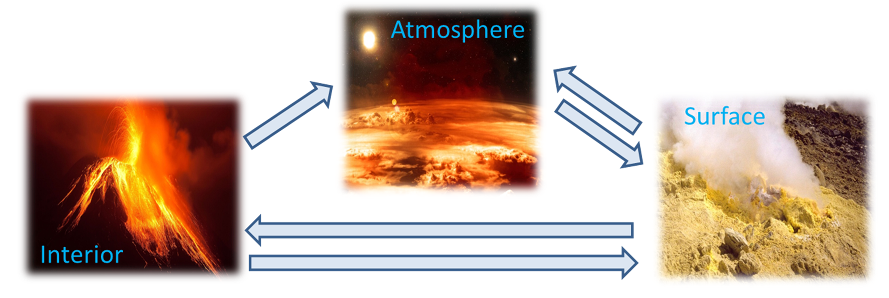Probing Venus’ enigmatic evolution with the new Venus Simulation Laboratory at TU Delft
- Delft University of Technology, Faculty of Aerospace Engineering, Netherlands (e.s.steenstra@tudelft.nl)
Venus is like Earth in terms of size, density, and composition. However, both bodies evolved so dramatically differently that Venus is characterized by an uninhabitable, run-away greenhouse atmosphere, in marked contrast to Earth's favorable habitable conditions. Understanding the extreme divergence of Venus and Earth’s evolution is of great importance for understanding our early Earth, climate change as well as for studying the habitability of Earth- and Venus-like exoplanets. The key role of Venus in these fields is reflected by at least three major explorative missions scheduled in the next decade by NASA and/or ESA to study Venus in unprecedented detail.
Interpretation of the latter mission results requires an extensive geochemical understanding of Venus and how volatile species, such as CO2, SO2 and H2O, are distributed (Fig. 1). This larger cycle includes surface weathering processes, (recent) volcanism, and chemical reactions within the Venusian clouds. Such models rely heavily on experimental data. However, conducting systematic experiments under corrosive, high pressure-temperature conditions directly relevant to Venus’ surface and lower atmosphere is very challenging. Thus, many aspects related to the chemistry Venus’ interior, surface and atmosphere remain poorly constrained. This includes the nature and degree of surface weathering by the corrosive atmosphere, the character of (past) volcanism, the origin of particular surface features and reactions within the sulfuric acid clouds.
Figure 1: The Venus Simulation Laboratory (VSL) is aimed to experimentally and numerically constrain volatile element fluxes between Venus’ interior, surface and atmosphere

To study the Venus interior, surface and atmosphere in detail, a new lab is therefore being built at the Planetary Exploration Section, Faculty of Aerospace Engineering, TU Delft, using the ERC Starting Grant ‘’VenusVolAtmos’’’. The lab will initially consist of the following;
- A Thermogravimetric Analysis – Differential Scanning Calorimetry (TGA-DSC) apparatus with which chemical weathering of the Venusian surface can be studied in situ at the conditions directly relevant to Venus’ lowest atmosphere, while using a controlled, corrosive atmosphere.
- A piston cylinder press, with which subsurface magmatism on Venus can be simulated up to a depth of 100 km
- A gas mixing furnace, with which magma degassing in the earlier history of Venus can be studied.
More funding is currently requested that would be used for purchasing a high-pressure furnace, with which volcanism can be studied under the present-day dense atmosphere and more controlled reaction chambers, to accomdate multiple experiments at a given time. The specific research questions, progress and experimental goals will be presented at the meeting.
Acknowledgements: This work is supported by the ERC Starting Grant ‘’VenusVolAtmos’’ awarded to E.S.S.
How to cite: Steenstra, E. S.: Probing Venus’ enigmatic evolution with the new Venus Simulation Laboratory at TU Delft, Europlanet Science Congress 2024, Berlin, Germany, 8–13 Sep 2024, EPSC2024-388, https://doi.org/10.5194/epsc2024-388, 2024.